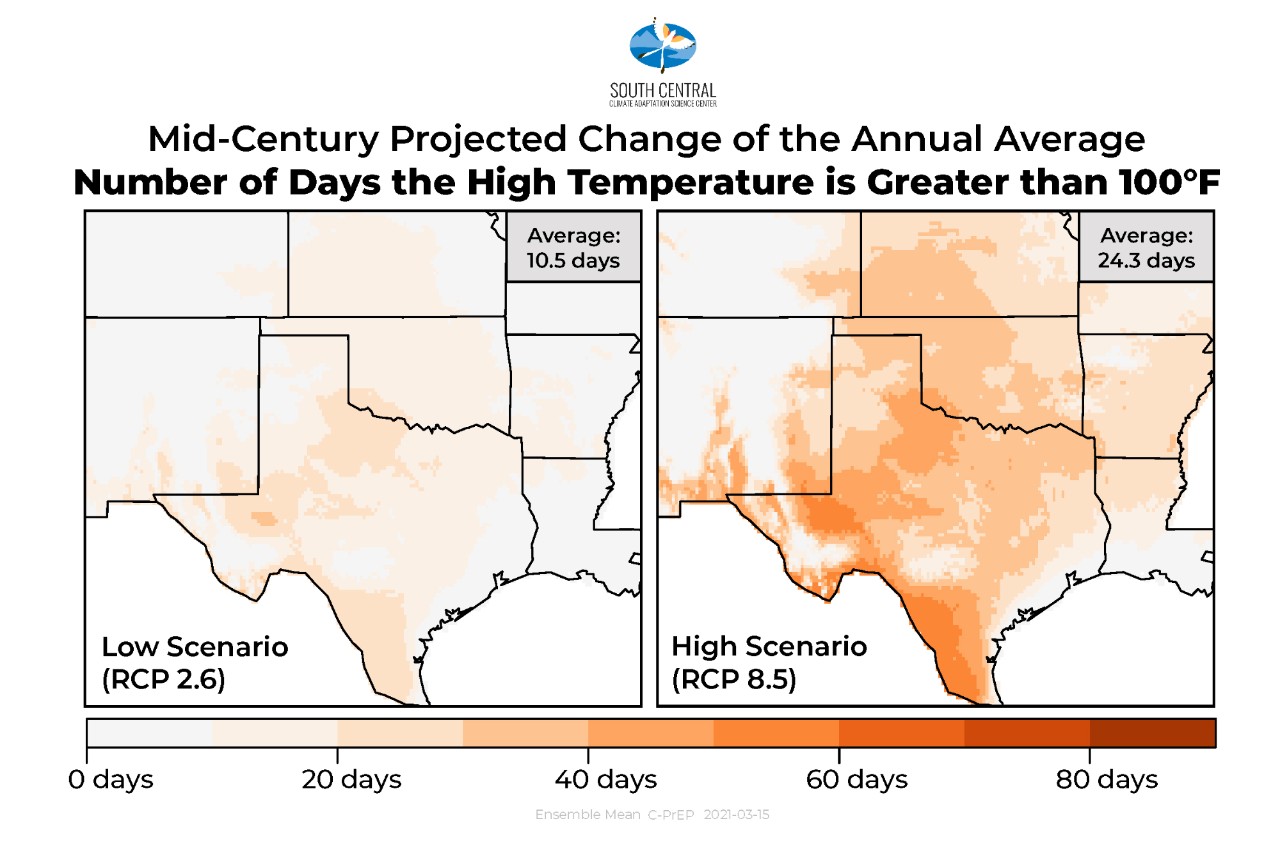“Our center has provided a report on climate projections for Oklahoma City that includes variables such as the annual average and summer average temperatures, days over 100 degrees and heatwaves,” said Dolly Na-Yemeh, Ph.D., climate adaptation specialist at the South Central Climate Adaptation Science Center. “By the 2036-2065 period, there is projected to be 13 to 28 more days annually with average temperatures over 100 degrees. Currently, Oklahoma City only experiences about nine days annually with temperatures over 100 degrees. As a community, we must develop the resources to be able to help people plan for this extreme heat.”
While Oklahomans are somewhat accustomed to hot maximum temperatures, warm nighttime low temperatures, which have increased over time, are especially dangerous to human health. When the body cannot properly cool off at night, heat stress can lead to heat exhaustion, heat cramps and even heat stroke.
Wenwen Cheng, Ph.D., assistant professor of landscape architecture in the Christopher C. Gibbs College of Architecture at OU is the principal investigator of the Oklahoma City Heat Vulnerability Index, which is funded by NASA’s Environmental Equity and Justice Program. This initiative is currently developing a heat vulnerability index that will allow Oklahoma City to distribute resources to the areas most at risk of extreme heat.
“Our heat vulnerability index will help decision-makers identify vulnerable areas within Oklahoma City,” Cheng said. “The data we’re providing includes social demographics and economic characteristics of the population, health conditions, urban environment and morphology, and urban climate factors.”
Researchers are also working with OKC Beautiful, a nonprofit organization that provides education, assistance and resources for sustainable living in Oklahoma City, to connect with residents in neighborhoods identified as vulnerable areas.
“We asked the residents of the JFK neighborhood, which is east of downtown OKC, what issues they thought were important to their health. Besides heat, they frequently mentioned air pollution. Trees and sidewalks were mentioned multiple times when asked about their needs for the neighborhood environment,” Cheng said. “Hopefully, we can provide some design strategies that can be used alongside a placemaking grant to help mitigate the health problems in this area.”
The City of Oklahoma City is scheduled to undertake its heat-mapping campaign on Aug. 12 and is seeking more than 300 people to measure air temperatures to find the hottest parts of the city. To learn more or to volunteer, visit okc.gov.
Additionally, the SCIPP is conducting a study of Tulsa residents to report where in the city they experience the most extreme heat in the summer and where they most often experience flooding. Survey responses are due Aug. 1. More information about the Tulsa surveys available at southernclimate.org


